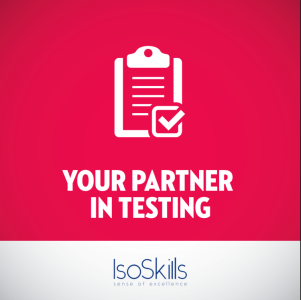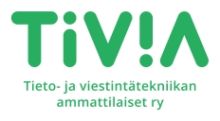The Pros and Cons of Combining External Software Development with Internal QA Teams

![]() The Pros and Cons of Combining External Software Development with Internal QA Teams
The Pros and Cons of Combining External Software Development with Internal QA Teams
As software changes rapidly day by day, firms are always on the lookout for the best ways of ensuring that their product makes it to the market. A method that has become popular nowadays is combining outsourced software development with QA (Quality Assurance) provided internally. This approach comes with its own set of pros and cons. This article will look at the advantages and disadvantages of keeping a QA team in house coupled with third party development so that project managers and other decision-makers can have sufficient basis for informed choice making.
The PROS
The advantages of having an internal QA team are numerous, and they can help improve quality and productivity throughout the software development process.
Streamlined Coordination with Business Insights: Internalization of a QA function makes synergy with business functions better. This closeness facilitates straightforward communications with the major stakeholders including business or product owners. In agile environments, it becomes critical for rapid iteration cycles that require continuous feedback in the process of incorporating business driven insights during testing.
In-depth Product Knowledge: In-house QA teams enable an in-depth experience on a product as well as the business goals that drive it. With such depth of understanding, they are able to conduct more meaningful testing that goes beyond merely checking if the product functions in a technical manner alone, but if it delivers the desired outcomes in a way that is satisfying to users.
Aligned Quality Standards: Internal QA teams will better represent and exhibit the organization’s set quality guidelines. Familiarity with the company’s values, culture, and expectations makes it easy for them to achieve constancy of quality that supports the company reputation and promises to its customers.
Flexibility and Responsiveness: Internal teams are flexible entities and they can easily adjust towards any project scope changes or shifting strategies that could emerge in a dynamic development environment where flexibility is a vital feature.
Data Security: Using internal QA, it is possible to minimize risks linked to disclosing private information to outside suppliers. This is especially important for such projects where highly confidential information or sensitive industries with strict regulations are involved.
Long-term Investment: The formation of internal quality assurance may constitute a serious investment. Over the years, the collective expertise of the team turns into a valuable asset that can be used for future projects.
The CONS
Though this approach is obviously beneficial, it also presents certain challenges when compared to outsourcing.
Recruitment and Training: The issue of attracting and also keeping the competent staff is very important. A QA specialist should be sufficiently familiar with both software engineering techniques and the software development cycle. It is expensive to train the new employees and to update a team about the most recent test techniques, and instruments.
Process Integration: Proper integration of QA processes into a software development lifecycle, however, is not that straightforward. This creates challenges of communication between the external development and internal quality assurance teams for example.
Resource Utilization: Balancing the workload for an in-house team can be challenging. There are times, especially during the early development phase of the software, the team might be underused. Conversely, there can be moments when the workload is too much for the team to handle, leading to delays and bottlenecks.
Scalability Concerns: Scaling an in-house team to mirror the changing needs of various projects is a sluggish undertaking in comparison to the agility involved with upscaling outsource departments.
Ongoing Investment: Keeping an in-house team up to date with the latest testing methodologies, tools, and technologies requires continuous investment in training and resources.
The Hybrid Model
In order to solve these problems, firms usually discuss the hybrid models of QA when they should be conducted internally and other tests when the need arises externally. There is however a balance that may be struck between the scalability and relative affordability of outsourcing coupled with control and expertise of an internal team.
Moreover, creating open lines of communication and well-defined standards for work with the outsourced development team can help address certain fears related to collaboration within external organizations. Bridging this gap will require ensuring that the outsourced team has adequate product knowledge, and understands the business objectives for collaboration purposes.
In conclusion, it is essential for companies to gauge their unique situation, project needs and objectives when making the decision concerning whether to retain an in-house quality assurance team as they outsource the software development activities. However, an in-house team provides a number of benefits regarding control, communication, and product knowledge, but also has specific limitations concerning expenses, resources distribution, and scaling.
IsoSkills has engaged, during the years, in projects where clients have outsourced the testing to us with great success. IsoSkills have also taken care of development while the clients retained the QA function especially on enterprise projects with complex organizational structure. In every case, the close and open communication, and the trust between the teams, were key elements of the project's success.
From IsoSkills you get help in every stage of your testing, from test maturity assessment to test automation and building experienced and trustworthy testing services. IsoSkills has large pool of testing specialists both in Finland and in our nearshore, Romania.
This article was written by our test automation specialist. If you like to know more about testing or IsoSkills services, contact: Jaana Väänänen, jaana.vaananen(at)isoskills.fi or 050-5253693.

Lisätietoja
Tagit
Liiketoimintaprosessi
 |
Laatu, turvallisuus ja ympäristö |
 |
Tietohallinto |
 |
Tuotekehitys ja suunnittelu |
Erikoisosaaminen
 |
Käyttöliittymäsuunnittelu |
 |
Testaus ja laadunvarmistus |
 |
Ohjelmistokehitys |
 |
Tietoturva |
 |
Verkkokaupparatkaisut |
 |
Webkehitys |
Toimialakokemus
 |
IT |
 |
Kauppa |
 |
Kiinteistöala |
 |
Kuljetus, liikenne ja logistiikka |
 |
Media |
 |
Pankki ja vakuutus |
 |
Telekommunikaatio |
 |
Terveys- ja sosiaalipalvelut |
Teknologia
 |
Amazon Web Services |
 |
Azure |
 |
CAD |
 |
|
 |
HubSpot |
 |
Microsoft |
 |
Android |
 |
iOS |
 |
Windows Phone |
 |
Angular |
 |
Django |
|
|
Flutter |
 |
Node.js |
 |
React |
 |
React Native |
 |
C# |
 |
C++ |
 |
Java |
 |
Javascript |
 |
PHP |
 |
Python |
 |
Drupal |
 |
Windows |
 |
Magento |
 |
Shopify |
 |
Unity |
Tarjonnan tyyppi
 |
Konsultointi |
 |
Toteutustyö |
 |
Vuokratyövoima |
Omat tagit
 IsoSkills - Asiantuntijat ja yhteyshenkilöt
IsoSkills - Asiantuntijat ja yhteyshenkilöt

Jaana Vaananen
Business Development and Sourcing Director
 |
|
| Jaana Vaananen, Business Development and Sourcing Director, IsoSkills Oy | |
|
jaana.vaananen@isoskills.fi +358505253693 |
|
|
|
 IsoSkills - Muita referenssejä
IsoSkills - Muita referenssejä
 IsoSkills - Muita bloggauksia
IsoSkills - Muita bloggauksia
It- ja ohjelmistoalan työpaikat
- Laura - Hankinta-asiantuntija, tietohallinto
- Laura - Development Manager, Operations
- Laura - ICT-asiantuntija
- Laura - IT Manager
- Nordea - Senior Fullstack Developer
- Innofactor Oyj - Business Architect
- Laura - Cloud Engineer
Premium-asiakkaiden viimeisimmät referenssit
- SD Worx - Kehitystyö SD Worxin kanssa takaa Clas Ohlsonille parhaat palkanmaksun prosessit kasvun tiellä
- Digiteam Oy - Case Esperi Care Oy: Ketterä kumppanuus vei Esperin verkkosivu-uudistuksen maaliin sujuvasti ja aikataulussa
- Kisko Labs Oy - Howspace Hub - Mukautuva oppimisen hallintajärjestelmä kasvaviin oppimisalustavaatimuksiin
- Kisko Labs Oy - Sanoma Pro: Multimediasisältöjen hallinnan uudistaminen
- Kisko Labs Oy - Svean helppokäyttöinen palvelu asiakkaan verkko-ostosten hallintaan
- Kisko Labs Oy - Yhtenäinen käyttöliittymä luovien alojen ammattilaisille
- Codemate - Digitaalisen murroksen nopeuttaminen Flutterin avulla
Tapahtumat & webinaarit
- 27.11.2024 - Green ICT -ekosysteemitapaaminen III: Ohjelmistojärjestelmien virrankulutuksen mittaaminen ja kasvihuonepäästöjen arviointi
- 27.11.2024 - Digitaalisen asiakaskokemuksen uusi aikakausi
- 28.11.2024 - Webinaari: Keskity myyntityön laatuun!
- 28.11.2024 - Copilot-webinaari – Mielekkäämpää tietotyötä turvallisesti
- 04.12.2024 - Kuinka oikea matka- ja kululaskujärjestelmä tehostaa prosesseja?
- 05.12.2024 - Green ICT VICTIS -hankkeen kick off -tilaisuus
- 15.01.2025 - Datavastuullisuuden valmennus: hanki valmiudet vastuulliseen datan ja tekoälyn hyödyntämiseen
Premium-asiakkaiden viimeisimmät bloggaukset
- Zimple Oy - Pipedrive vai Hubspot? Kumpi kannattaa valita?
- SC Software Oy - Jatkuvat palvelut – asiakaslähtöistä kumppanuutta projekteista ylläpitoon
- Timeless Technology - Ohjelmoitavat logiikat (PLC): Ratkaisevat työkalut automaatioon ControlByWebiltä.
- Kisko Labs Oy - Heroku: Ohjelmistokehittäjän ykköstyökalu skaalautuvien sovellusten rakentamiseen
- SD Worx - Näin luot vakuuttavan Business Casen palkkahallinnon ulkoistukselle
- Timeless Technology - Kyberriskien tunnistaminen Profitap IOTA verkkoanalysaattorin avulla.
- GidiUp Oy - Ai hitto -päivä: Kun sesonki pääsee taas yllättämään

|
Digitalisaatio & innovaatiot blogimediaBlogimediamme käsittelee tulevaisuuden liiketoimintaa, digitaalisia innovaatioita ja internet-ajan ilmiöitä |






































